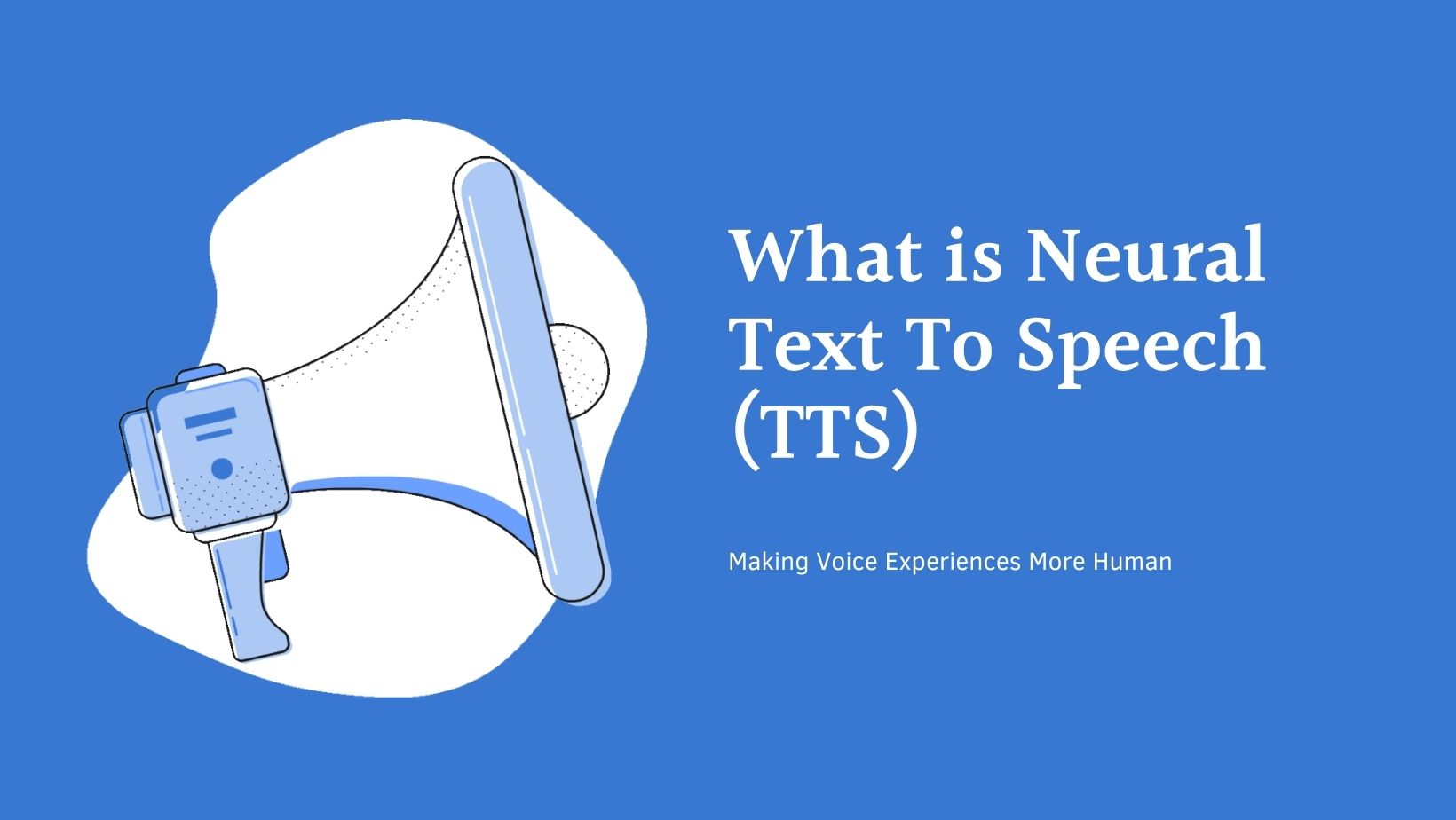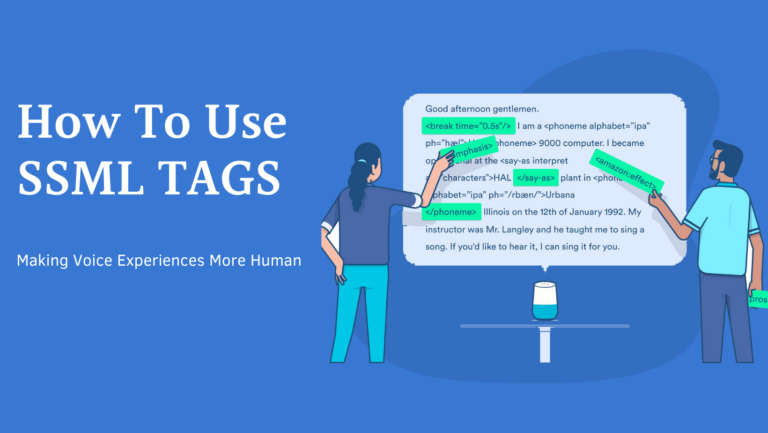What is Neural Text to Speech (TTS): Making Voice Experiences More Human
As technology advances, so does the way we interact with it. One such advancement is Neural Text to Speech (TTS), which allows computers to convert written text into spoken words. Unlike the traditional TTS systems, which use pre-recorded audio snippets of words and phrases, neural TTS uses deep learning algorithms to synthesize natural-sounding speech in real-time.
Neural TTS has come a long way in recent years and has numerous applications across different industries. It can improve accessibility for people with visual impairments or reading difficulties, enhance user experience in virtual assistants and chatbots, and create more realistic and engaging voiceovers in media productions.
In this blog post, we will delve into the world of neural TTS and explore its inner workings, advantages and limitations, and practical applications. Whether you’re a curious technology enthusiast or a professional looking to incorporate neural TTS into your work, this post will provide a comprehensive overview of this exciting technology.
What is Neural Text To Speech?
Neural Text to Speech (TTS) is a state-of-the-art technology that enables machines to convert written text into natural-sounding speech. This technology is achieved through deep learning algorithms that mimic human speech production.
Traditional TTS systems relied on pre-recorded audio snippets of individual words and phrases to generate synthetic speech, resulting in a robotic and unnatural voice output. However, neural TTS systems use advanced machine learning models to synthesize speech in real time. These models are trained on large amounts of data to learn the nuances of human speech, including intonation, stress, and pronunciation, resulting in a more realistic and natural-sounding voice.
Neural TTS breaks the input text into smaller linguistic units, such as phonemes, syllables, or words. Then, these units are passed through a neural network that generates the corresponding acoustic features, such as pitch, duration, and timbre, required for speech synthesis. Finally, the acoustic elements are combined to produce a natural-sounding speech waveform.
One of the significant advantages of neural TTS is its ability to produce more expressive, natural, and intelligible speech than traditional TTS systems. Neural TTS can also adapt to different languages, dialects, and accents, making it a versatile technology for various applications.
What Makes Text-to-Speech “Neural?”
The term “neural” in Neural Text-to-Speech (TTS) refers to using artificial neural networks modeled after biological neurons’ structure and function to generate natural-sounding speech.
In a neural TTS system, the input text is first processed by a language model, which predicts the probability distribution of the next word based on the previous terms in the sequence. This language model is trained on a large dataset of text data, such as books or articles, to learn the structure and rules of the language.
The output of the language model is then passed through a neural network called the acoustic model, which generates the acoustic features required for speech synthesis. The acoustic model is trained on a large dataset of speech recordings and their corresponding transcriptions, allowing it to learn the mapping between text and speech.
Finally, the acoustic features generated by the acoustic model are passed through a vocoder, which converts them into a speech waveform that can be played through a speaker or headphones.
Learning to produce speech in a neural TTS system involves training the acoustic model on a large dataset of speech recordings and their corresponding transcriptions.
This training involves a process called backpropagation. The model adjusts its parameters to minimize the difference between its predicted acoustic features and the basic acoustic features of the speech recordings.
As the model is trained on more data, it learns to generate more natural-sounding speech that mimics the nuances of human speech, such as intonation, stress, and pronunciation. This process is similar to how humans learn to produce speech by listening to and mimicking the speech of others.
For example, we want to generate speech for the sentence “The quick brown fox jumps over the lazy dog” using a neural TTS system. The language model predicts the next word based on the previous terms in the sequence, and the acoustic model generates the corresponding acoustic features required for speech synthesis. The vocoder then converts the acoustic features into a speech waveform that can be played through a speaker.
Voiceley.com employs this technology, known as deep neural networks (DNN), to generate more lifelike machine speech.
A neural network is called “deep” with three or more processing layers. In the case of Neural Text-to-Speech (TTS), the neural network is used to generate the acoustic features required for speech syntheses, such as pitch, duration, and timbre.
A language model first processes the input text, which predicts the next word’s probability distribution based on the sequence’s previous terms. This language model is trained on a large dataset of text data, such as books or articles, to learn the structure and rules of the language.
In a deep neural network, the input layer sorts data, passing it through one or more hidden layers. These hidden layers further refine the signal, sorting it into increasingly complex categories. Finally, the output layer delivers the ultimate result by generating an audio signal that sounds strikingly like human speech.

By training the DNN on a large dataset of speech recordings and their corresponding transcriptions, the Neural TTS system learns to generate natural-sounding speech that mimics the nuances of human speech, including intonation, stress, and pronunciation. This process is similar to how humans learn to produce speech by listening to and mimicking the speech of others.
Deep neural networks allow Voiceley.com to generate more expressive, natural, and intelligible speech than traditional TTS systems. As technology evolves, we can expect even more lifelike and personalized speech output that can mimic various languages, accents, and dialects.
Neural TTS Models: Duration, Pitch, and Acoustic Predictions
Neural TTS models consist of several components that generate natural-sounding speech.
- Duration Model: One of these components is the duration model, which predicts the length of each phoneme in the speech waveform. This model helps ensure the speech output is appropriately paced and natural-sounding.
- Pitch Model: Another component is the pitch model, which predicts the fundamental frequency of the speech waveform. This model helps ensure that the speech output is adequately pitched and intonation and stress are conveyed correctly.
- Acoustic Model: Finally, the acoustic model generates the acoustic features required for speech syntheses, such as spectral envelope, fundamental frequency, and aperiodicity. This model is the core component of the neural TTS system and is responsible for generating the actual speech output.
Training Neural TTS Models
Training these models requires large amounts of high-quality data for the text and speech domains. The duration and pitch models can be trained using supervised learning techniques, where the model is trained to predict the correct values for each phoneme in the speech waveform.
The acoustic model, on the other hand, requires both supervised and unsupervised learning techniques. It must learn to generate the correct acoustic features while also dealing with the complex interactions between phonemes and other linguistic units.
The Advantages of Neural TTS and Areas Of Application
Neural Text-to-Speech (TTS) technology constantly evolves and opens up new possibilities. With its ability to generate high-quality, natural-sounding speech, Neural TTS technology has made significant strides in various industries, from voice assistants to accessibility technology. In this blog, we will look closely at some new possibilities for Neural TTS technology and how it is being used to improve our lives.
1. Entertainment Industry
The entertainment industry is one area where Neural TTS technology significantly impacts. With its ability to generate natural-sounding speech, Neural TTS technology is being used to create more realistic and engaging audio experiences, such as video games and virtual reality experiences. By allowing users to interact with virtual characters and environments more naturally and intuitively, Neural TTS technology is helping to create more immersive and engaging entertainment experiences.
Accessibility Technology
Another area where Neural TTS technology significantly impacts is accessibility technology. With its ability to generate high-quality, natural-sounding speech, Neural TTS technology is helping to make technology more accessible to people with disabilities. For example, it is being used to create screen readers that can convert text into speech, making it easier for visually impaired users to access information on their devices.
Education
Neural TTS technology is also being used in education, helping to make learning more accessible and engaging. With its ability to generate natural-sounding speech, Neural TTS technology is being used to create interactive educational experiences, such as virtual tutors and language-learning apps. By allowing students to interact with technology more naturally and intuitively, Neural TTS technology is helping to make education more accessible and practical.
Wrapping it Up
In conclusion, Neural Text-to-Speech (TTS) technology has come a long way in recent years and is rapidly becoming a vital tool in various industries. With its ability to generate high-quality, natural-sounding speech, Neural TTS technology is helping to make technology more accessible and user-friendly, improving our lives in countless ways. Whether in entertainment, accessibility, or education, Neural TTS technology opens up new possibilities and helps to create more immersive, engaging, and effective experiences.
As Neural TTS technology continues to evolve and improve, it is clear that it will play an increasingly important role in our lives, making technology more accessible and intuitive for everyone. With its broad range of applications and continued advancements, the future of Neural TTS technology is inspiring. We can expect to see even more exciting developments in future years.



